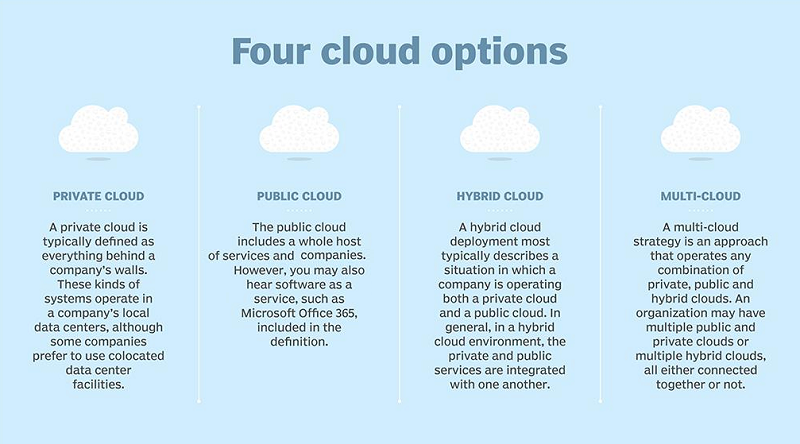The term public cloud arose to differentiate between the standard cloud computing model and private cloud, which is a proprietary cloud computing architecture dedicated to a single organization. A standard private cloud extends a company's existing data center resources, and is accessible only by that company.
Public and private clouds offer similar services -- such as compute, storage and networking -- and capabilities such as scalability. However, the two models have significant differences in how they operate and provide those services.
Public cloud resources run on multi-tenant, shared infrastructure and are available to users over the internet. Conversely, private cloud consists of single-tenant architecture that runs on privately owned infrastructure.
Beyond architectural differences, public and private cloud models differ in price, performance, security, compliance and more. Private cloud requires large upfront investment for cloud infrastructure, as opposed to the public cloud's pay-as-you-go model. In terms of performance, public cloud can be subject to network bandwidth and connectivity issues since it largely relies on the public internet. Private cloud can offer more consistent performance and reliability since it is a localized site.
Both public and private cloud models provide extensive security offerings. However, the private cloud offers more fine-grained control over configurations and physical isolation. Private cloud also poses fewer compliance issues since data does not leave the on-premises facility. Organizations with strict compliance needs often choose private cloud.
These differences apply to the standard on-premises private cloud. However, alternative private cloud models blur the lines between public and private computing. Cloud providers now offer on-premises versions of their public cloud services. Examples include AWS Outposts, Azure Stack and Google Anthos, which bring physical hardware or bundled software services into an enterprise's internal data center. These distributed deployments act as isolated private clouds, but they are tied to the provider's cloud.

Hybrid and multi-cloud
A third model, hybrid cloud, is a combination of public and private cloud services, maintained by both internal and external providers and with orchestration between the two. This model enables organizations to tap into the benefits of the public cloud for certain workloads, such as to accommodate demand spikes, but also maintain their own private cloud for sensitive, critical or highly regulated data and applications. There are a number of hybrid cloud benefits -- such as flexible deployment options, greater cost control and the ability to move between environments.
A related option is a multi-cloud architecture, in which an enterprise uses more than one cloud. Most often it refers to the use of multiple public clouds. Depending on its needs, a business might choose to use both the hybrid and multi-cloud models.

